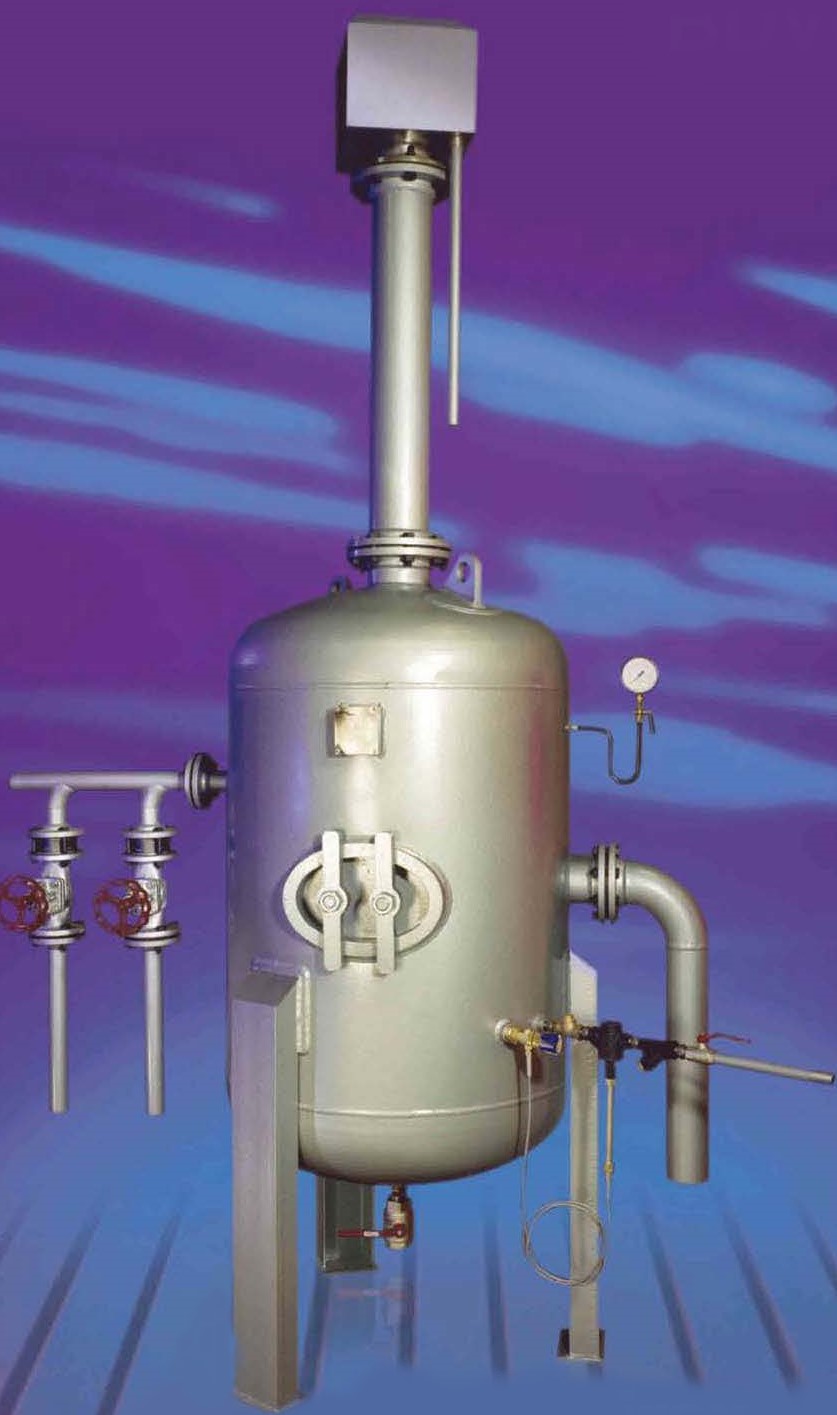auxiliary equipment
COOLING TANKS
Purge collection tanks are designed to collect discharges from automatic/manual bottom purge controls, manual continuous purge control valves, automatic TDS control valves and systems, vessels, auxiliary equipment and energy recovery equipment.
Salt purges must be carried out in steam boilers to remove contaminants, as too high a level will cause foaming, as well as scaling in the boiler tubes. An increase in solids at the bottom of the boiler could also have serious consequences. Most modern boilers have TDS controls to remove dissolved solids, and a boiler bottom purge valve that opens at regular intervals to remove precipitated solids.
As the boiler bottom purge valve opens throughout the day for only a few seconds, it is not economical to recover heat, but the water cannot be discharged to the drain unless it is cold. Today, boiler purge collection tanks have replaced boiler purge pits as the recommended way to cool this water.
TDS control purges should be connected to a heat recovery system, but where this is not practical or economical, salt purges can also be piped to a boiler purge collection tank.
Regulation
The purge collection tanks are designed and constructed according to PD 5500 and therefore comply with the European Pressure Equipment Directive 97/23/EC.
They also comply with the tank construction guidelines for purge collection applications of the Health and Safety Executive PM60.
Warning:
For the application of boiler purges and to comply with PM60
of the HSE Guidance, the internal tank pressure may
not exceed 0.35 bar.
Maximum body design conditions PN16
PMA maximum allowable pressure at 171°C 7 bar
TMA maximum allowable temperature at 7 bar 171°C
Minimum allowable temperature 0°C
Recommended PMO maximum working pressure 0.35 bar
Recommended TMO maximum working temperature 109°C
Minimum working temperature 0°C
Hydraulic test: 12 bar
PTMX maximum test pressure 17 bar
Maintenance note:
The tank should be drained to remove sludge every six months.
Before using the tank again, it should be filled with water until it discharges thorugh the outlet. Purge tanks should be thoroughly examined by “competent personnel” every 14 months or in every boiler inspection.


